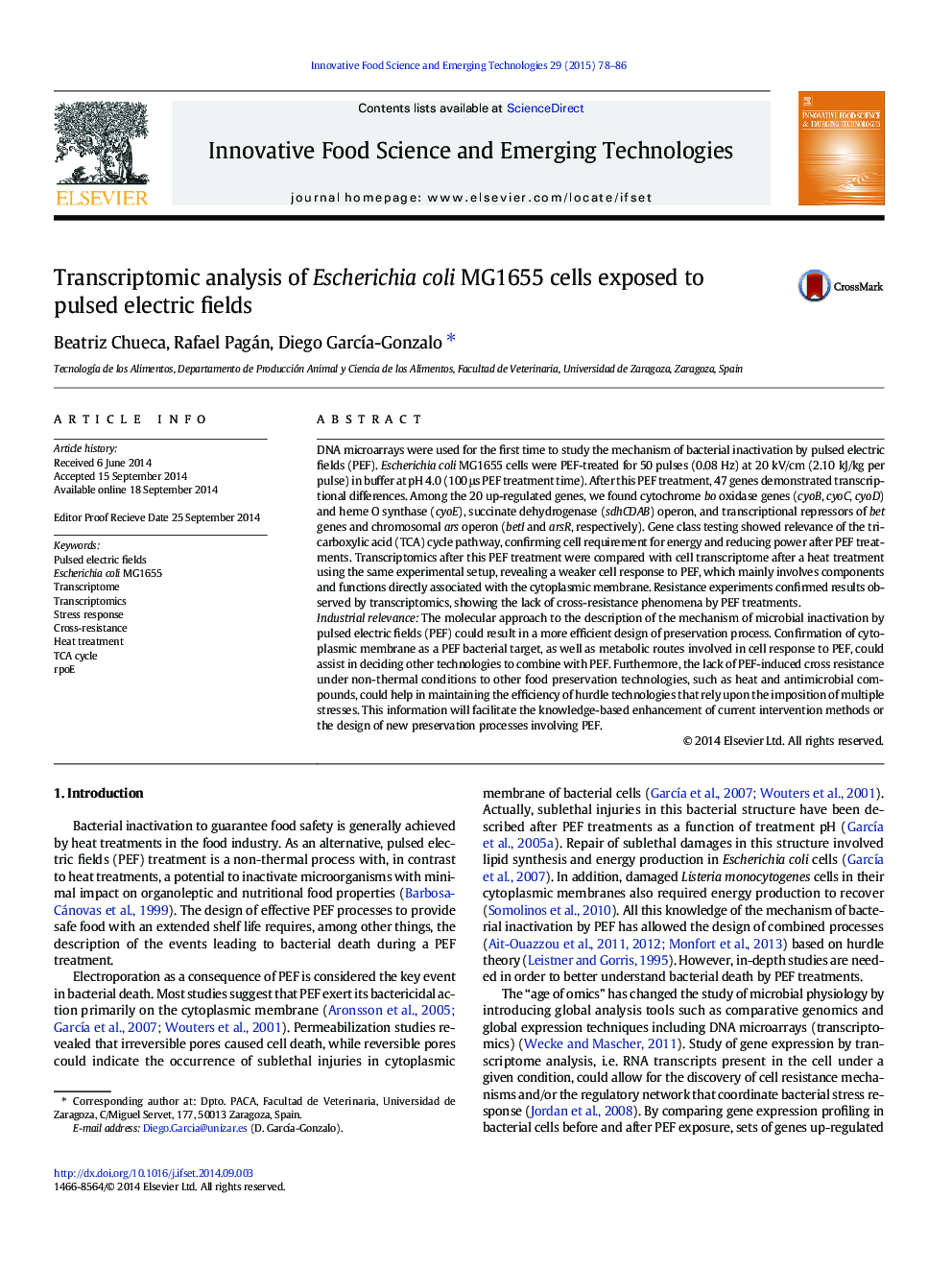| Article ID | Journal | Published Year | Pages | File Type |
|---|---|---|---|---|
| 2086465 | Innovative Food Science & Emerging Technologies | 2015 | 9 Pages |
•Transcriptomic response of PEF-treated E. coli cells at pH 4.0 was evaluated.•PEF treatments activated a response related to cytoplasmic membrane.•Cell requirement for energy and reducing power after a PEF treatment was confirmed.•PEF limited the development of acid shock response at pH 4.0.•Transcriptomic cell response after PEF was much more limited than after heat.•Transcriptomic and phenotypic results showed a lack of PEF-induced cross-resistance.
DNA microarrays were used for the first time to study the mechanism of bacterial inactivation by pulsed electric fields (PEF). Escherichia coli MG1655 cells were PEF-treated for 50 pulses (0.08 Hz) at 20 kV/cm (2.10 kJ/kg per pulse) in buffer at pH 4.0 (100 μs PEF treatment time). After this PEF treatment, 47 genes demonstrated transcriptional differences. Among the 20 up-regulated genes, we found cytochrome bo oxidase genes (cyoB, cyoC, cyoD) and heme O synthase (cyoE), succinate dehydrogenase (sdhCDAB) operon, and transcriptional repressors of bet genes and chromosomal ars operon (betI and arsR, respectively). Gene class testing showed relevance of the tricarboxylic acid (TCA) cycle pathway, confirming cell requirement for energy and reducing power after PEF treatments. Transcriptomics after this PEF treatment were compared with cell transcriptome after a heat treatment using the same experimental setup, revealing a weaker cell response to PEF, which mainly involves components and functions directly associated with the cytoplasmic membrane. Resistance experiments confirmed results observed by transcriptomics, showing the lack of cross-resistance phenomena by PEF treatments.Industrial relevanceThe molecular approach to the description of the mechanism of microbial inactivation by pulsed electric fields (PEF) could result in a more efficient design of preservation process. Confirmation of cytoplasmic membrane as a PEF bacterial target, as well as metabolic routes involved in cell response to PEF, could assist in deciding other technologies to combine with PEF. Furthermore, the lack of PEF-induced cross resistance under non-thermal conditions to other food preservation technologies, such as heat and antimicrobial compounds, could help in maintaining the efficiency of hurdle technologies that rely upon the imposition of multiple stresses. This information will facilitate the knowledge-based enhancement of current intervention methods or the design of new preservation processes involving PEF.
